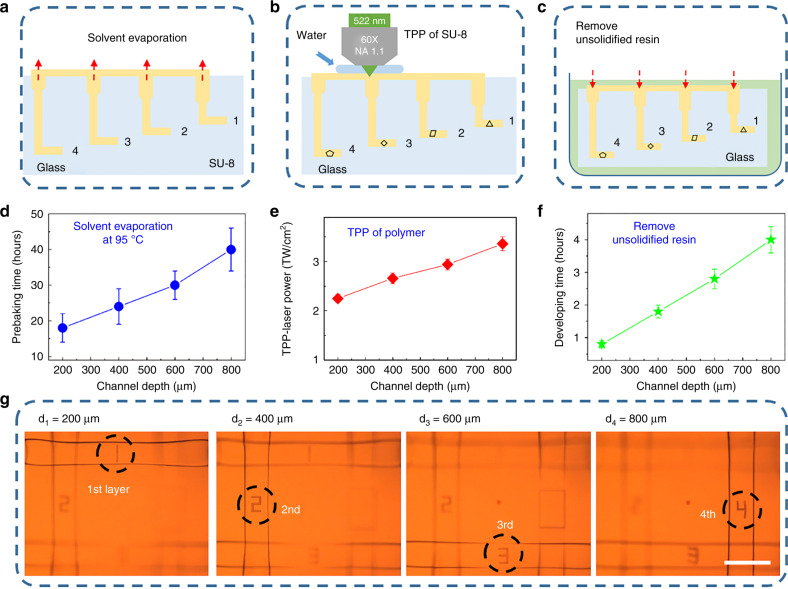Fig. 3.
Quantitative investigation of three key experimental parameters (prebaking time, TPP-laser power and developing time) to integrate polymer microstructures into true 3D multilayered microchips. a–c Schematic illustrations of the solvent evaporation, TPP of SU-8 and developing. d Relationship of the prebaking time and channel depth. For the deeper channel, longer prebaking time is required to totally vaporize the solvent in the SU-8 resin. The optimized prebaking times were 18 ± 4, 24 ± 5, 30 ± 4, and 40 ± 6 h for the one-, two-, three-, and four-layer microchips, respectively. e The TPP laser powers required for the formation of the 1st-, 2nd-, 3rd-, and 4th-layer channels are 2.52±0.08, 2.66±0.11, 2.94±0.11 and 3.36±0.14 TW/cm2, respectively. f The required developing time for the one-, two-, three-, and four-layered microchips is 0.8 ± 0.1 h, 1.8 ± 0.2 h, 2.8 ± 0.3 h and 4 ± 0.5 h, respectively. A deeper channel requires more developing time. g Multilayer integration of different polymer characters of “1”, “2”, “3”, and “4” in each of the four layers. Scale bars: 200 μm

